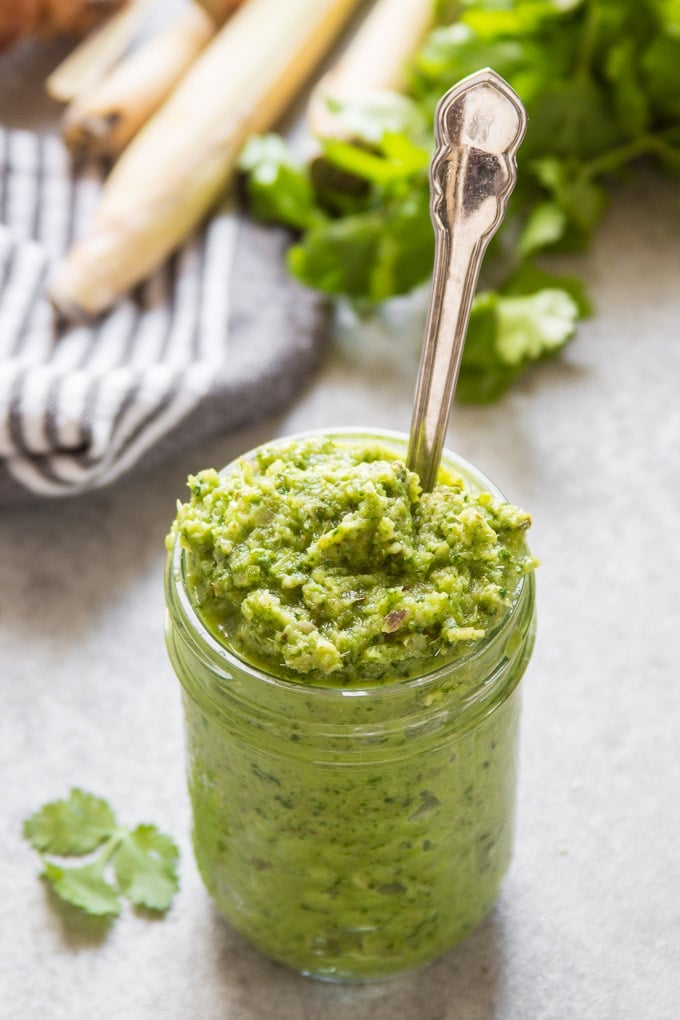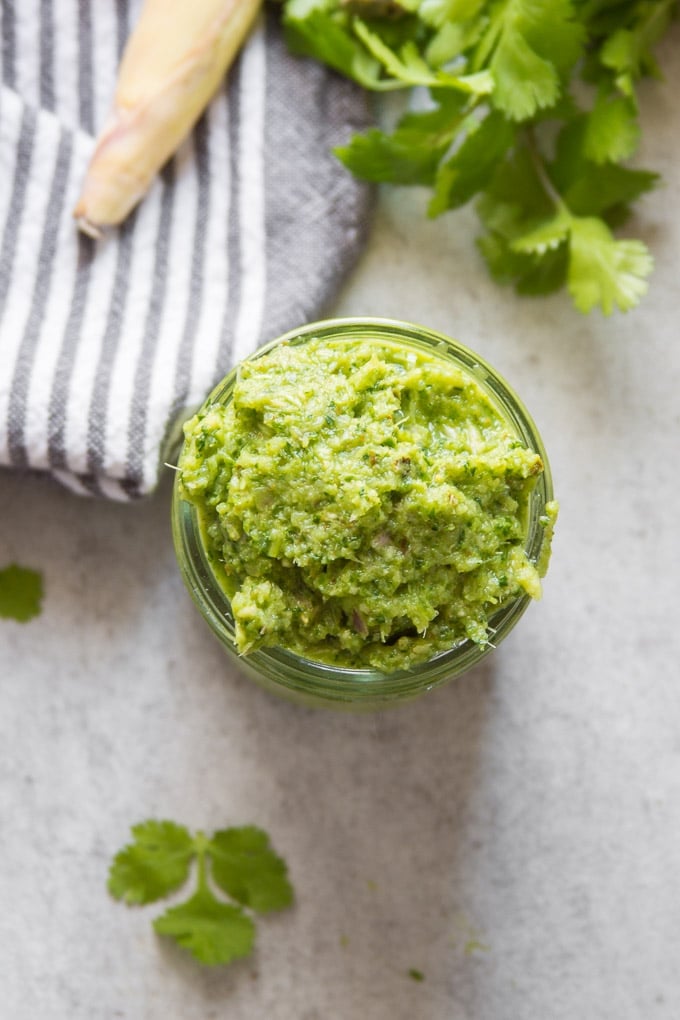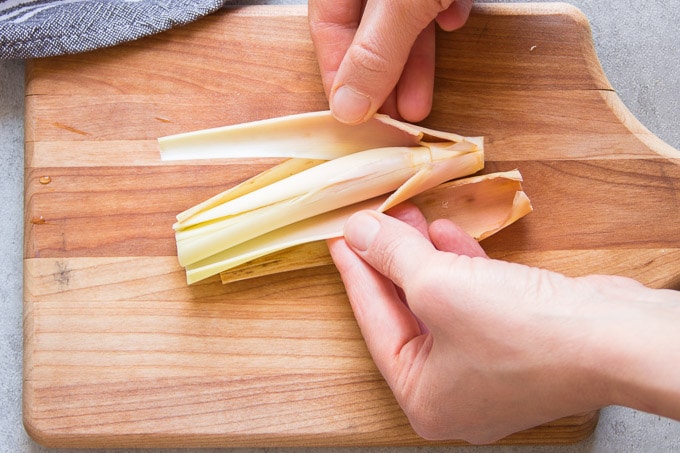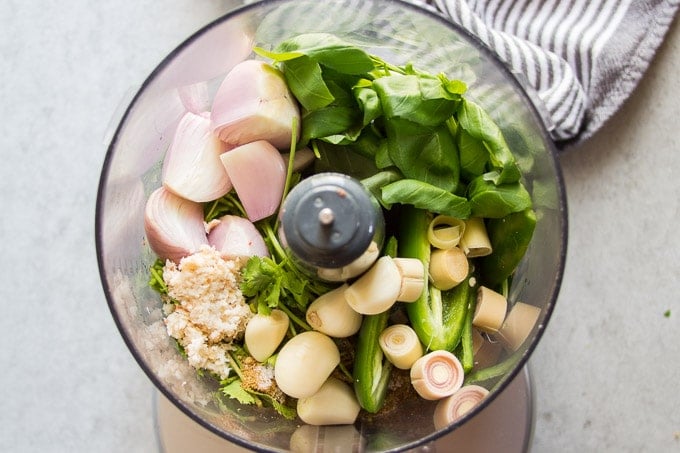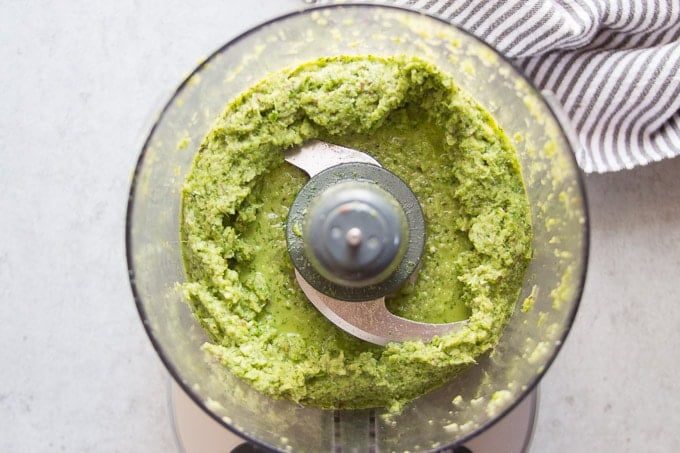This is my third Thai curry paste recipe on the blog, and it seems like with this post I’ve at least gotten the really important ones out of the way. By “really important ones,” I mean the big favorites. I had to at least get those covered! After I posted a recipe for massaman curry paste (my favorite), I got a bunch of requests for red. So I posted red curry paste, and then got a bunch of people asking for green. I guess we’re a divided bunch when it comes to our favorite curries.
Why Homemade?
Curry paste is a great thing to have around. A few spoonfuls pack a ton of flavor and are key to some amazingly delicious and easy to prepare meals. And yes, you can just go out and buy pre-made curry paste at the store, and I do that myself pretty often, but I like to make my own whenever I can, for a few reasons. First, vegan and even vegetarian curry paste can be tough to find. Many store-bought varieties contain shrimp paste or fish sauce. Also, I just like making stuff. It’s fun to produce something in your own kitchen and feel all proud that it tastes just like that thing you got at a restaurant and were so impressed with.
Finally, homemade curry paste is so much better than store-bought, and you can make it to suit your very own personal tastes! The main feature that most people seem concerned with customizing is the heat level. Green curry paste is one of the easiest when it come to controlling the heat. While green curry paste is usually pretty hot, it really stands out in my mind for those flavors that create its vibrant green color: cilantro, basil, and lime. Green curry paste is made with hot peppers, but you can play around with the amount and variety, and this recipe gives you some options. For my batch, I went with a mild version, using just four jalapeño peppers, because I my husband, who I rely on for taste testing, isn’t into the heat. For a hotter variety, increase the number of peppers and/or go with a hotter variety like serrano or Thai chilies.
Green Curry Paste Ingredients
For the most authentic homemade curry paste, a trip to an Asian market may be in order. Bonus points if it’s a Thai or Vietnamese market! It’s the best place to get some of the tougher to find ingredients like galangal (which is an aromatic root, similar to ginger) and kaffir lime leaves. If you can get your hands on some galangal and kaffir lime leaves, please do, because they really do make a difference in the flavor of your curry paste. If you can’t, go for regular old ginger and lime zest. It’ll still taste good. You’ll also need those hot peppers we talked about, as well as shallots and garlic, lemongrass, fresh basil and cilantro, and ground cumin and coriander seed. Oil is an optional ingredient. It helps to smooth out the paste during blending, but you can leave it out if you prefer.
How to Make Green Curry Paste
It’s pretty darn easy! Most of the work is in prepping your ingredients: peeling the garlic and shallots, measuring the herbs and spices, and seeding the peppers. The only step that might be tricky is prepping the lemongrass, if you’ve never done it before. You’ll notice that the outer layer is pretty tough. Grab your stalk and slice a long slit along this outer layer so you can peel it off. The remaining inner core will still be pretty hard, but not quite as dry. Chop it up into a few pieces.
Next, place everything but the oil into a food processor bowl.
Blend it up! If you’re using oil, drizzle it in while you blend.
Like this recipe? If so, be sure to follow me on Facebook, Pinterest or Instagram, or subscribe to my newsletter. And please stop back and leave me a review and rating below if you make it!
